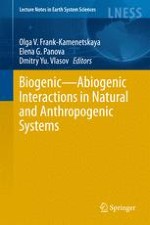This book offers a collection of papers presented at the V International Symposium "Biogenic - abiogenic interactions in natural and anthropogenic systems" that was held from 20-22 October 2014 in Saint Petersburg (Russia). Papers in this book cover a wide range of topics connected with interactions between biogenic and abiogenic components in the lithosphere, biosphere and technosphere. The main topics include: biomineralization in geosystems, geochemistry of biogenic-abiogenic systems, biomineral interactions in soil, minerals in living organisms and biomimetic materials, medical geology, bioweathering and destruction of cultural heritage.
